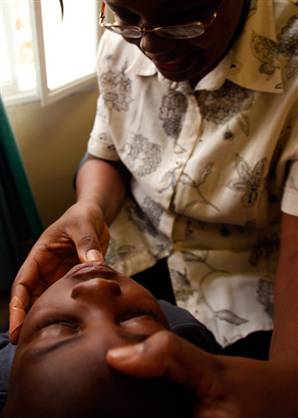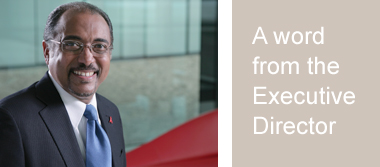In sub-Saharan Africa, where the drugs only started arriving a few years ago, resistance is partly the unforeseen consequence of good intentions. There are not enough drugs to go around, so clinics run out and patients can’t do full courses. The inferior meds available in Africa poison other patients. Misprescriptions are common and monitoring is scarce.
Month: December 2009
Progress on paediatric HIV not enough
Michel Sidibé, Executive Director of UNAIDS, Under Secretary-General of the United Nations
JOHANNESBURG, 30 November 2009 (PLUSNEWS) – Some headway has been made in mitigating the impact of HIV/AIDS on children and young people, but too many are still needlessly infected, and receive little or no treatment, care and support.
“Children have a right to be born free from HIV,” said Michael Sidibé, UNAIDS executive director. “No cost is too high for saving mothers and babies.”
This is according to Children and AIDS: The Fourth Stocktaking Report, launched on 30 November by UNICEF in partnership with UNAIDS, the World Health Organization (WHO) and the UN Population Fund (UNFPA).
The annual report examines evidence of progress in four key areas in 2008: prevention of mother-to-child transmission (PMTCT), paediatric HIV care and treatment, prevention of HIV among adolescents and young people, and protection and support for children affected by HIV and AIDS.
The most significant progress was in PMTCT, with 45 percent of HIV-positive pregnant women globally receiving antiretroviral (ARV) treatment to prevent them passing HIV to their children; up from 24 percent in 2006.
Several countries with high HIV prevalence expanded PMTCT coverage to most pregnant women needing treatment: 73 percent in South Africa, 91 percent in Namibia and 95 percent in Botswana. Other countries lagged behind: in Nigeria only 10 percent of pregnant women with HIV were tested and treated to prevent transmission to their babies.
The countries most successful at scaling up PMTCT incorporated their programmes into existing maternal and child health services, the report noted.
On the same day, WHO released new recommendations for PMTCT that include providing ARV treatment to all HIV-positive women from 14 weeks of pregnancy until they stop breastfeeding. The new guidelines are expected to further reduce the number of infected infants.
“In many high-income countries paediatric HIV has been virtually eliminated,” commented Dr Margaret Chan, Director General of WHO. “This shows what is possible.”
Approximately 38 percent of children living with HIV were receiving ARV treatment in 2008 – an improvement of nearly 40 percent from 2007 – but still less than the percentage of HIV-positive adults being treated.
Without diagnosis and treatment, AIDS mortality in infants is highest in the first two months of life, but globally only 15 percent of babies were tested for HIV by the time they were two months old.
The report pointed out that even an HIV-positive diagnosis did not guarantee a child would receive treatment. A Clinton Foundation study from eight countries found that 53 percent of HIV-positive mothers and their children were lost to follow-up after birth.
The situation of children orphaned or made vulnerable by HIV/AIDS improved little in 2008, with only one in eight households caring for such children receiving medical, financial or educational assistance.
Underfunded and understaffed social welfare ministries struggled to deliver services to children affected by AIDS, leaving community and faith-based organizations to try filling the gaps. “The current economic crisis, if prolonged, is likely to worsen such outcomes unless efforts are undertaken to mitigate its impact,” the report warned.
Despite modest increases among young people in their knowledge of HIV and how to prevent it, those aged 15 years to 24 years still accounted for 45 percent of new adult infections in 2008, with girls in sub-Saharan Africa by far the hardest hit.
The report concluded that investments in HIV and AIDS prevention and treatment for women and children were paying off, but needed to be bolstered and used more wisely. Programmes should be informed by evidence, and constantly monitored and evaluated for impact.

